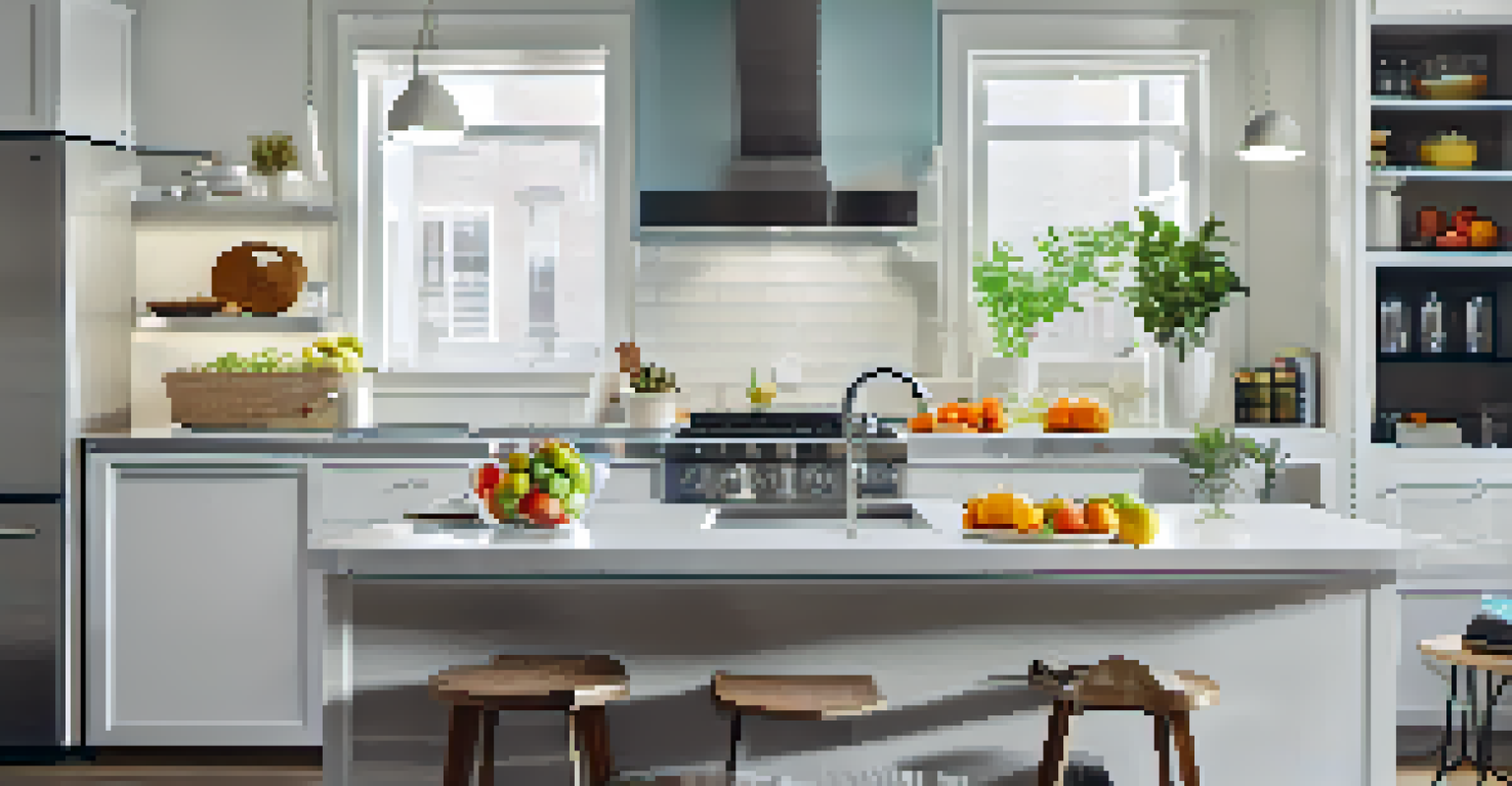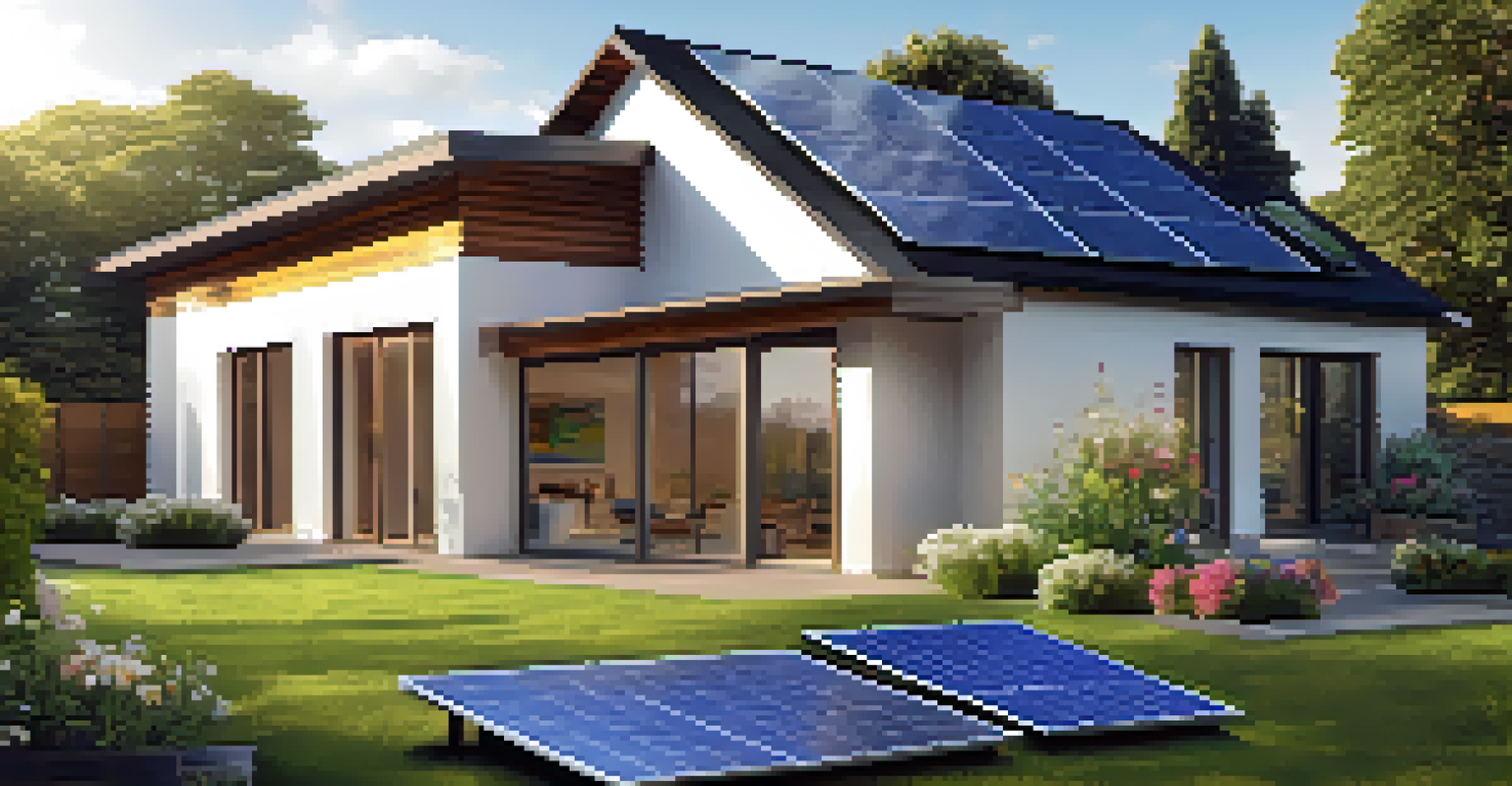Home Automation for Energy Conservation: Essential Tips

Understanding Home Automation Basics for Energy Savings
Home automation refers to the use of technology to control household systems remotely. This can include lighting, heating, cooling, and appliances. Understanding these basics is crucial because they set the stage for optimizing energy use in your home.
The future is green energy, sustainability, renewable energy.
When you automate your home, you can program devices to operate only when needed, reducing unnecessary energy consumption. For instance, smart thermostats can learn your schedule and adjust heating or cooling accordingly, ensuring comfort without wasting energy.
By grasping these foundational concepts, you’ll be better equipped to implement effective energy-saving strategies. The beauty of home automation lies in its ability to simplify your life while making it more energy-efficient.
Smart Thermostats: The Heart of Energy Efficiency
One of the most impactful home automation devices for energy conservation is the smart thermostat. Unlike traditional thermostats, smart ones adjust your home’s temperature based on your preferences and habits, ensuring optimal energy usage.

For example, if you leave for work at the same time every day, a smart thermostat can automatically lower the temperature when you leave and raise it just before you return. This not only keeps your home comfortable but also reduces energy bills significantly.
Home Automation Saves Energy
Implementing home automation can significantly reduce energy consumption by optimizing the usage of heating, cooling, and lighting systems.
Investing in a smart thermostat is a smart choice for anyone looking to save energy. Not only do they offer convenience, but they also provide detailed reports on your energy usage, helping you make informed decisions.
Automated Lighting: Bright Ideas for Saving Energy
Automated lighting systems can dramatically reduce energy consumption in your home. These systems allow you to control the lights remotely or set schedules, so you only use them when necessary.
Energy efficiency is not just a way to save money; it's a way to save the planet.
Consider using motion sensors in rooms that are often left unoccupied, such as bathrooms or hallways. These sensors automatically turn off the lights when no one is present, preventing wasted energy.
With the ability to dim lights and create customized lighting schedules, automated lighting not only enhances comfort but also aligns perfectly with energy conservation goals. It’s an easy upgrade that can lead to noticeable savings.
Energy-Efficient Appliances: Automate Your Savings
Upgrading to energy-efficient appliances is another vital step in your home automation journey. These appliances consume less energy and often come with smart features that allow for automation.
For instance, a smart washing machine can be programmed to run during off-peak hours, taking advantage of lower energy rates. This not only saves money but also eases the strain on the grid during peak times.
Smart Thermostats Boost Efficiency
Smart thermostats learn your schedule to adjust temperatures automatically, ensuring comfort while cutting down on energy bills.
By integrating energy-efficient appliances into your home automation system, you can optimize their use and significantly cut down on energy consumption without compromising on performance.
Smart Plugs: Small Devices with Big Impact
Smart plugs are an affordable and versatile way to enhance your home’s energy efficiency. These devices allow you to control any appliance that plugs into a standard outlet, enabling automation and remote control.
For example, you can set a smart plug to turn off your coffee maker after a certain period or schedule outdoor lights to turn on at sunset. This helps ensure that devices are not left on unnecessarily, reducing energy waste.
Incorporating smart plugs into your home automation setup is a simple yet effective way to manage energy consumption. They provide flexibility and control, making it easy to implement energy-saving habits.
Monitoring Energy Usage: Knowledge is Power
To truly harness the benefits of home automation for energy conservation, monitoring your energy usage is crucial. Many smart devices come with built-in energy monitoring features that provide insights into consumption patterns.
By reviewing this data, you can identify which appliances or systems consume the most energy and adjust your habits accordingly. For example, if you find that your HVAC system is running more than expected, it may indicate the need for maintenance or a programming adjustment.
Monitor Usage for Better Savings
Regularly monitoring energy usage helps identify high-consumption areas, enabling informed adjustments for greater energy efficiency.
Regularly monitoring energy usage empowers you to make informed decisions about your home automation strategy. With awareness comes the ability to optimize and save more energy.
Integrating Renewable Energy Sources: A Sustainable Approach
Integrating renewable energy sources, like solar panels, with your home automation system can enhance energy conservation efforts. These systems can work together to optimize energy use and maximize savings.
For example, smart energy management systems can prioritize using solar energy for your appliances during the day, reducing reliance on grid power. This not only lowers energy bills but also contributes to a more sustainable lifestyle.

By blending renewable energy sources with home automation, you create a powerful synergy that promotes energy efficiency and sustainability. It’s a forward-thinking approach that benefits both your wallet and the environment.
Creating a Comprehensive Home Automation Plan
To truly reap the benefits of home automation for energy conservation, creating a comprehensive plan is essential. Start by assessing your current energy usage and identifying areas for improvement.
Next, prioritize which devices or systems to automate first based on their potential impact on energy savings. For example, focusing on heating and cooling may yield significant results compared to other areas.
Lastly, regularly evaluate your plan and make adjustments as necessary. Home automation is not a one-size-fits-all solution; it requires ongoing attention and refinement to ensure you’re achieving the highest energy efficiency possible.